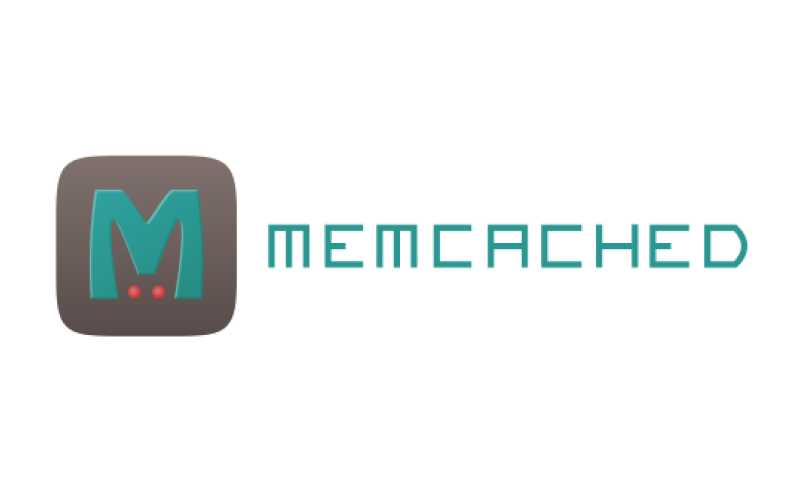This in-memory store is a general-purpose, distributed memory-caching system that is designed to speed up dynamic web applications by reducing the load on databases. It is used to store small chunks of data, such as strings and objects, that are retrieved from database calls, API calls, or page rendering.
Memcached is free and open-source, and it is known for its simple yet powerful design that allows it to spread memory across a system for better use of resources. It is widely used by organizations and developers to improve the performance and scalability of their applications.
What is Memcached?
Memcached is an open-source distributed caching system that improves the performance and scalability of web applications by operating as an in-memory key-value store and optimizing data retrieval. Memcached integrates into existing architectures, supporting multiple programming languages and networking protocols. When storing data in small chunks, such as strings and objects with Memcached, organizations do not need additional databases or API calls when retrieving information, leading to faster overall load times.
The software is often thought of as “short-term memory” for applications as it stores frequently accessed data in a place where it can be recalled almost instantaneously which reduces the load on databases and servers. This improves both end user engagement and experience for web applications and decreases the overall cost for businesses by limiting the infrastructure needed.
How does Memcached work?
Memcached stores of small chunks of data, such as strings and objects, in the cache for quick access. Data is stored in key-value pairs, where the key is a unique code assigned to the data and the value is the actual record of the data. Memcached stores data in a virtual pool of memory, that is shared among all servers, providing the best possible performance of the application.
When a developer or end user sends a request, they use the assigned key to gain access. If the key exists in the cache, the data is returned immediately. If the key is not found in the cache, the application will retrieve the data from the original source, such as a database. If data is retrieved from the database, Memcached will then store it in the cache, allowing quick access when called on in the future.
Developers are able set expiration times for the data stored in the cache, after which the data will be automatically removed, meaning it is solely accessible by retrieval from the database. thereby increasing the space available for more relevant data.
How can your organization use Memcached?
Memcached integrates into a wide range of web applications to store and retrieve data from the cache, preventing the need to access the full database. The bespoke APIs, which are available in most programming languages, make Memcached utilizable for organizations in any industry. When using Memcached, organizations can make sure that frequently-used data is quickly and easily accessible, reducing the overall speed of applications for the end user.
One further way organizations can use Memcached is through implementing a caching strategy that takes advantage of the system’s ability to scale. As the demand for an application grows, Memcached can automatically increase the usable cache size, allowing for a larger amount of data to be stored in memory. This can help organizations check that their applications can handle increased traffic and usage without compromising on performance.
The ability to improve the performance of distributed systems can also be incredibly beneficial for any organization. Memcached allows all servers to look into the same virtual pool of memory, which means that a given item is always stored and retrieved from the same location in the web cluster improving the performance of the system by reducing the need to access data from multiple locations.
Exploring the Benefits of Memcached in Data Caching
Memcached revolutionizes performance by storing data in memory, resulting in rapid response times and reduced load on databases. The open-source nature facilitates easy integration and customization, while its multithreaded architecture enables seamless scalability and handling of increased traffic. With support for multiple programming languages and open data formats, Memcached integrates existing web applications, ensuring consistent and efficient user experiences as the cache size dynamically adjusts to application demand.
Why use Memcached?
Memcached is an open-source solution for organizations and teams of developers of any size. As the software is available at no cost, there is really no downside to employing it within your application.
The software is designed to handle increasingly high traffic and system usage, stemming from its multi-threaded architecture which allows for vertical scaling. This means the web application can handle the growing demand without any reduction in performance.
Memcached is easy to use, flexible and supports multiple programming languages and open data formats, meaning it can be integrated into any existing web application regardless of the technology being used. With a lot of accessible community-developed features, developers can easily integrate and alter Memcached specific to their requirements.
With a lot of accessible community-developed features, developers can easily integrate and alter Memcached specific to their requirements. The community-driven approach means regular updates, bug fixes, and enhancements to the caching system are implemented, promoting its stability and reliability.
Who uses Memcached?
Memcached is widely used and is popular among organizations of all sizes and industries. Some well-known organizations that use Memcached include:

Netflix uses Memcached to cache user-specific data, such as personalized recommendations and viewing history, in order to provide a more personalized and responsive experience, as well as improve the customer experience.

Facebook extensively uses Memcached for the performance and scalability. With billions of active users and a massive amount of data, Facebook relies on Memcached’s in-memory capabilities for data retrieval and reduce database load.

Equinix, a global data center provider, uses Memcached to cache frequently accessed data from their short term cache to reduce the load on their databases and improve the overall performance of their services.
Considerations and limitations of Memcached implementation
Like any technology, Memcached comes with its own set of limitations. These include potential data loss if the server is rebooted or the Memcached process is terminated, a maximum limit on data storage based on available memory, restricted support for certain data types, reliance on key-based access, the absence of built-in security measures and backups, and challenges with concurrent data access. These limitations should be carefully considered when evaluating the suitability of Memcached for specific applications or use cases.
Limited data persistence: | Data will be lost if the server is rebooted or if the Memcached process is terminated. This can be problematic for applications that rely on data persistence, and additional measures such as data replication or disk storage must be implemented to make sure data is not lost. |
Limited data size: | Memcached has a maximum limit on the amount of data that can be stored, which is determined by the amount of memory available on the server. If the amount of data to be stored exceeds this limit, some data may need to be evicted to make room for new data. |
Limited data types: | Only a limited variety of data types are supported meaning more complex data types, such as images or videos, may not be able to be stored. |
Limited data access: | As a key-value store, data can only be accessed by its key. This can make it difficult to access or manipulate data, particularly if the key is not known or if the data needs to be modified in some way. |
Limited data security and backup: | Memcached does not include any built-in security measures or backups to protect data stored in it, so sensitive data should not be stored in Memcached without additional measures being implemented. |
Limited concurrent access: | As it is not designed to handle concurrent access to the same data package from multiple users, Memcached can lead to issues such as data corruption or race conditions if not properly managed. |
Key length restriction: | Memcached has a maximum key length of 1MB or 250 characters, which can limit the ability to store certain types of data or keys that exceed this limit. |

